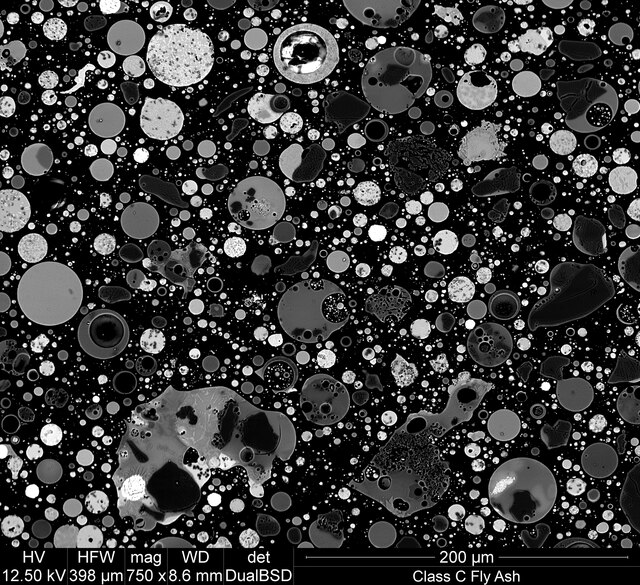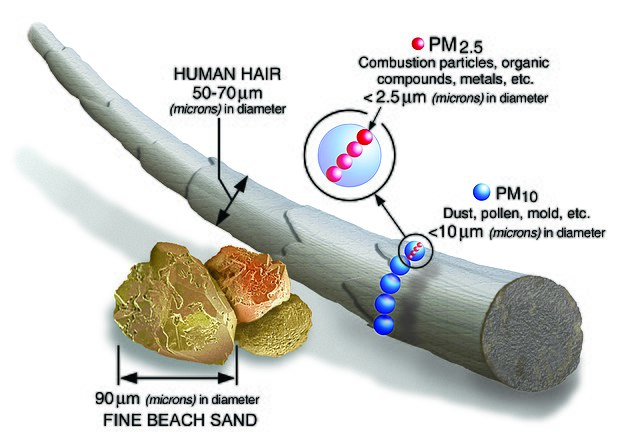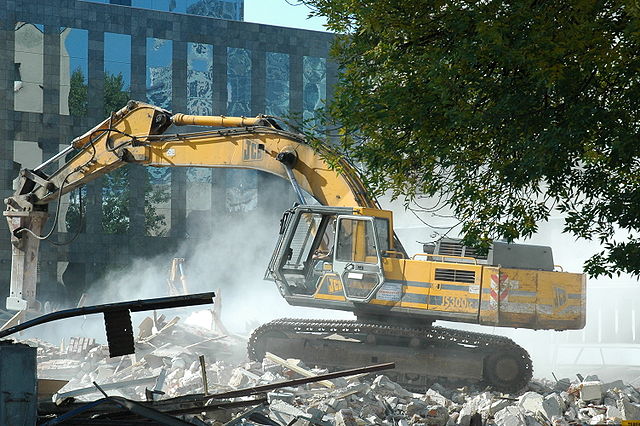Coal combustion products (CCPs), also called coal combustion wastes (CCWs) or coal combustion residuals (CCRs), are categorized in four groups, each based on physical and chemical forms derived from coal combustion methods and emission controls:
The upper reservoir of Ameren's Taum Sauk hydroelectric plant was constructed of roller-compacted concrete that included fly ash from one of Ameren's coal plants.
Tennessee Valley Authority Fly Ash containment failure on 23 December 2008 in Kingston, Tennessee
Photomicrograph made with a scanning electron microscope and back-scatter detector: cross section of fly ash particles
Particulates or atmospheric particulate matter are microscopic particles of solid or liquid matter suspended in the air. The term aerosol commonly refers to the particulate/air mixture, as opposed to the particulate matter alone. Sources of particulate matter can be natural or anthropogenic. They have impacts on climate and precipitation that adversely affect human health, in ways additional to direct inhalation.
PM2.5 and PM10 compared with a human hair in a graphic from the Environmental Protection Agency
Excavator (a type of heavy equipment commonly used at construction sites and roadworks) demolishing the remnants of the pre-war Postal Train 0880Station (Dworzec Pocztowy) at Jerozolimskie Avenue, Poland
Particulates in the air causing shades of orange, yellow, pink, and grey in Mumbai during sunset
Air pollution measurement station in Emden, Germany







